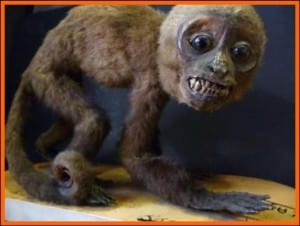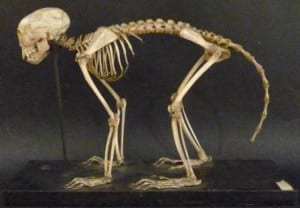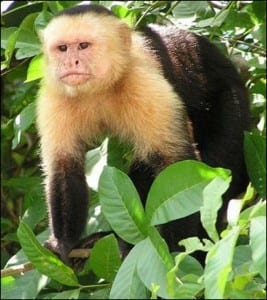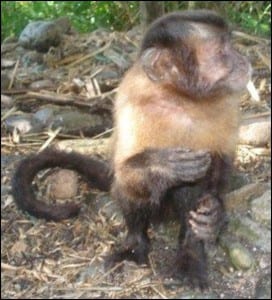Specimen of the Week: Week Twenty-Three
By Emma-Louise Nicholls, on 19 March 2012
 It was the edge of the Amazon rainforest, and I was working at a sanctuary for injured animals. In the dead of night, the entire room lit up as lightening streaked across the sky and thunder boomed down the corridor. In the morning we discovered that a rescued ocelot had escaped from its enclosure and gone on a rampage, killing several birds and seriously wounding a monkey nicknamed Lucia.
It was the edge of the Amazon rainforest, and I was working at a sanctuary for injured animals. In the dead of night, the entire room lit up as lightening streaked across the sky and thunder boomed down the corridor. In the morning we discovered that a rescued ocelot had escaped from its enclosure and gone on a rampage, killing several birds and seriously wounding a monkey nicknamed Lucia.
The nearest vet was a six hour drive away. With serious gashes all over her tiny body, the manager and I rushed her to the nearest hospital and literally begged the staff for help. We went through three doctors before we found one who would perform surgery. As Lucia’s screaming quietened and her eyes began to close, the doctor started to carefully stitch up her wounds. Although she should now by rights be called Scarface, she healed and recovered. Although a free ranging monkey, Lucia is now a regular visitor to the sanctuary. In her honour, this week’s specimen of the week is…
**!!!The Capuchin Monkey!!!**
1) Capuchins are considered the most intelligent New World primate. They use their giant intellect to make tools with which they break into nuts and shellfish. Capuchins pass on skills via demonstration which is almost always as good as verbal explanations… Capuchins eat a certain fruit covered in hairs that cause skin irritation. They cunningly rub the fruit on branches to get rid of the hairs. Unfortunately, the point of this act was lost in translation on a few white faced capuchins in Costa Rica who thought the game of fruit rubbing would be improved by rubbing the fruit on their bodies. Ouch.
2) Capuchin monkeys are so named because a couple of their species have a vaguely similar appearance to the Catholic Friars; the Order of Friars Minor Capuchin. Though at between 1.3 and 4.9 kg, they are more mini-monks than mighty men of the monastry.
3) The 23 subspecies of capuchin monkey are divided into two groups called tufted and non-tufted. These group names do what they say on the tin; some species have a ‘tuft’ of thicker, longer fur on the head. And some don’t (see right). Whilst a tufted species and a non-tufted species can have overlapping ranges, no two tufted species, or two non-tufted species for that matter, cohabit any part of the forest.
4) Capuchin monkeys are extremely mischievous. Scientists in Costa Rica working with black and white capuchins have witnessed them harassing howler monkeys, for fun. The much larger howler monkeys would be asleep on a branch. The naughty capuchin would sneak down the tree, onto the branch, and literally jump up and down to shake the branch and wake the howler monkey. Why? Because it is fun.
5) Capuchins form temporary groups with other species of monkey, such as squirrel monkeys, so that they can forage together whilst mutually benefitting from the increase in eyes and ears. However, they are very territorial when it comes to rival troops of the same species. In order to frighten off monkey strangers, they will bare their teeth, shake branches, and even throw things at intruders. Whilst wandering through the Amazon rainforest a couple of years ago I accidently got caught in the middle of a capuchin turf and *narrowly* missed having a small branch lodged in my skull. I’d like to think it wasn’t aimed at me…
2 Responses to “Specimen of the Week: Week Twenty-Three”
- 1
 Close
Close





Very informative post certainly! I love to read about wild life post because I have been researching on this topic. Information you published here its can be handy for me. Thanks!